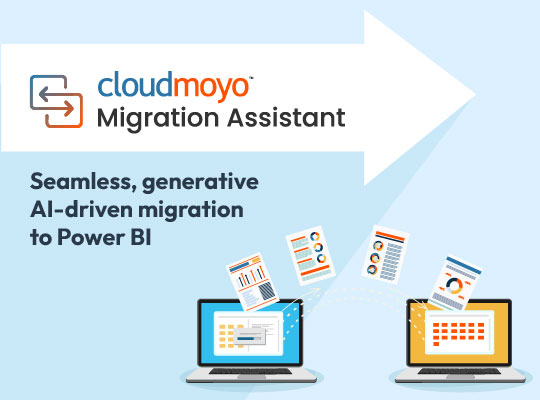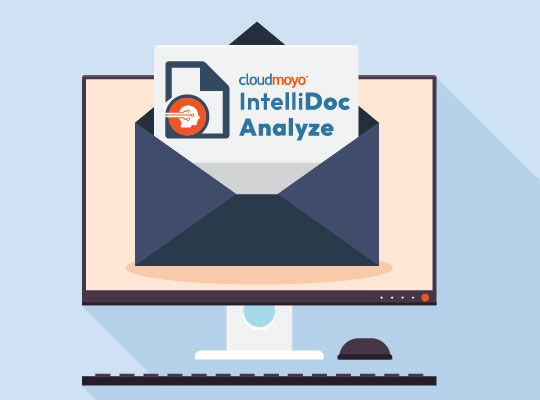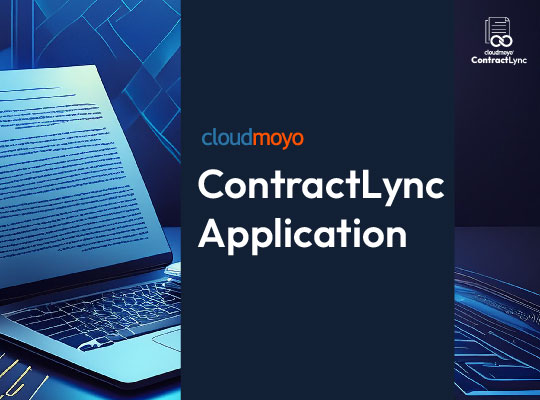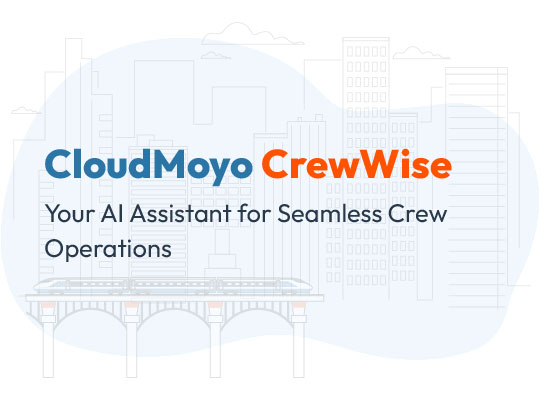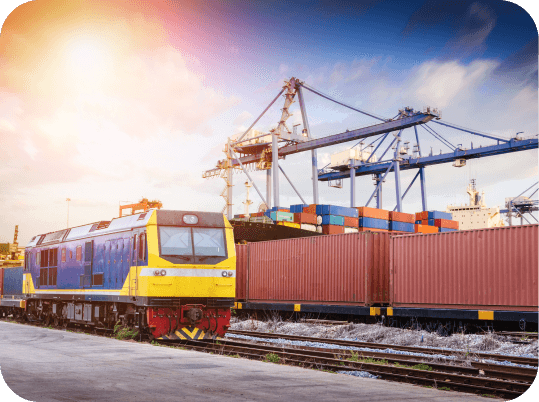A Network of Rails – The Challenge of Disconnected Contracts
Imagine steering a colossal freight train blindfolded through a maze. That’s the daily reality for railroad companies, an industry that as of 2024 is valued at $398.93 billion. The railroad industry is the backbone of global commerce, the invisible hand that delivers everything from shiny bikes to the lumber that builds your dream home. It’s enough to make anyone’s head spin.
But here’s the rub: buried beneath the powerful engines and intricate tracks lies a tangled mess of contracts. These agreements govern everything, from securing raw materials (buy-side & source-to-pay/S2P) to fulfilling customer orders (sell-side & quote-to-cash/Q2C). This industry underpins countless supply chains, connecting producers with consumers across vast distances. To deliver this essential service, railroads rely on a complex network of assets, including locomotives, railcars, terminals, and tracks. These assets require significant investments in procurement, maintenance, and infrastructure development.
These contracts are the lifeblood of the railroad industry, dictating everything from fuel procurement to equipment leasing to service agreements with shippers and terminals. However, the management of these contracts often operates at a glacial pace. Disparate systems, manual processes, and a lack of integration have created a labyrinth of contractual obligations, hindering the industry’s ability to adapt and thrive.
To navigate this complexity, railroads must transform their contractual operations from hindrance to a strategic asset. By unlocking the value hidden within contracts, railroads can optimize operations, mitigate risks, and enhance customer satisfaction.
The Inefficiency Engine: How Inefficient Contracting Methods Stifle Growth
The railroad industry, despite its vital role in global supply chains, is often hampered by antiquated contract management practices. These methods have resulted in an inefficient engine, stifling both growth and innovation:
- The Silo Effect – Traditional contracting fosters a siloed environment where information is fragmented and inaccessible. The isolation of critical data hinders effective collaboration, impedes visibility, and slows down decision-making processes. Take for example, a transportation company managing contacts with shippers, carriers, and terminals independently creates a complex web of obligations, making it difficult to identify cost savings opportunities, optimize resource allocation, and respond effectively to market changes. This lack of a unified view of contractual commitments can lead to delays, errors, and missed opportunities as departments work in silos, unable to share information and insights.
- Delays and Disputes – Manual processes and poorly drafted contracts create a breeding ground for delays, disputes, and increased financial risk. The absence of a centralized contract repository often results in time-consuming searches for critical information, delaying decision-making and increasing operational costs. Discrepancies in contract terms about pricing, service levels, or liability can lead to costly legal battles. Moreover, the intricate nature of insurance contracts, which must be meticulously drafted and checked, is crucial given the high incidence of damage to goods during shipping. The failure to accurately define coverage and claims procedures can result in significant financial losses for railroad companies.
- Adapting to a Changing Landscape – The railroad industry works in a dynamic environment characterized by fluctuations in fuel prices, congestion, and unforeseen events like natural disasters. In some cases, rigid, long-term contracts can hinder the industry’s ability to adapt to these challenges. For example, a fixed-price fuel contract might become burdensome during a price spike, while a contract that does not account for potential port delays can lead to a significant monetary crisis.
Contract Intelligence: Fueling the Railroad Renaissance
To overcome these challenges and unlock the full potential of the railroad industry, a change in basic assumptions is needed. Contract intelligence appears as a catalyst for this transformation.
Solution 1: Bridging the Gap
Contract intelligence brings disparate contract data together into a unified platform, fostering collaboration and efficiency. By integrating with systems like procurement and sales – often through vendor master data and CRM, respectively – contract intelligence creates a seamless flow of information across the organization. This enables departments to share contract information in real-time, reducing the need for manual data transfer and reducing the risk of errors. For example, a transportation company can use contract intelligence to connect its sales, procurement, and operations teams, ensuring everyone has access to the same contract information. This not only cuts the need for manual contracts but reduces the risk of errors.
To understand this better, imagine that your railroad company is a go-to provider for a major customer. With a robust contract intelligence system, you aren’t just responding to requests – you’re seizing opportunities. From initial quote generation to final contract execution (that’s a streamlined S2P and Q2C process for you). Contract intelligence acts as your secret weapon. It ensures everyone from sales to operations is on the same page, working in harmony to deliver winning proposals and ironclad contracts. This speed and alignment give you a competitive edge, turning potential deals into long-term partnerships
Solution 2: Real-Time Visibility and Control
Contract intelligence offers real-time insights into contract performance, enabling proactive risk management and decision-making. By monitoring key metrics and analyzing contract data, railroads can find potential issues before they escalate. For example, a contract intelligence platform can alert a railroad company to analyze supplier spend data. This then allows the company to identify cost-saving opportunities through contract renegotiations and supplier consolidation. Additionally, by tracking the time it takes to execute contracts, companies can pinpoint bottlenecks in the contract lifecycle and implement process improvements to accelerate deal closure.
Solution 3: Mitigating Risk, Maximizing Opportunity
Contract intelligence empowers organizations to manage risks effectively and capitalize on new opportunities. By automating routine tasks, enforcing contract compliance, and identifying potential breaches, contract intelligence reduces the likelihood of disputes and financial losses. Additionally, contract intelligence can help railroads find new revenue sources and optimize pricing strategies. For example, a railroad company uses contract intelligence to analyze contract data to identify underutilized assets. This can help develop new service offerings, like expedited shipping options or specialized cargo handling.
Furthermore, contract intelligence can help railroads navigate complex regulatory environments. By understanding the contractual implications of trade restrictions, like those imposed on goods originating from certain countries, railroads can ensure compliance and mitigate potential risks. Imagine a scenario in which Canada imposes heavy duties on certain products, an American railroad company can use contract intelligence to analyze its contracts and identify potential impacts on routes, pricing, and customer relationships.
Solution 4: Collaboration at the Speed of Rail
Contract intelligence fosters seamless communication among stakeholders, making and improving operational efficiency. By providing a centralized platform for contract management and collaboration, contract intelligence enables real-time information sharing and reduces the time spent on resolving contract-related issues. For example, a railroad company can use contract intelligence to fast-track collaborations with shippers, then develop and execute joint transportation plans, and improve overall supply chain relationships.
Solution 5: Weathering the Storm – Resilience Through Contractual Preparedness
Contract intelligence helps organizations navigate unforeseen challenges by providing tools to manage force majeure events, insurance, and other disruptions. By centralizing contract data and automating processes, contract intelligence enables faster response times and reduces the impact of unforeseen circumstances on business operations. If a natural disaster or an unforeseen circumstance occurs (like the COVID-19 pandemic), a railroad company can use contract intelligence to quickly assess the impact on its contracts, initiate insurance claims, and implement contingency plans.
The Future Tracks: A New Era of Efficiency and Sustainability
The railroad industry, once the mainstay of industrial progress, is now at a crossroads. To navigate the complexities of the rapidly evolving global economy, characterized by increasing regulatory burdens, environmental concerns, and heightened customer expectations, railroads must undergo a fundamental transition.
This is where contract intelligence appears as a powerful catalyst, enabling railroads to unlock a new era of efficiency, sustainability, and growth. By streamlining workflow, reducing errors, and accelerating cycle times, contract intelligence empowers railroads to optimize operations and even enhances profitability. The ability to proactively identify and mitigate contractual risks is paramount in an industry fraught with complexities. From unforeseen disruptions to regulatory changes, contract intelligence provides the necessary tools to safeguard against potential pitfalls and ensure business continuity.
Moreover, contract intelligence is instrumental in driving sustainable growth. As environmental concerns gain prominence, railroads are under increasing pressure to adopt responsible business practices. By integrating Environmental, Social, and Governance (ESG) considerations into contract management, railroads can prove their commitment to sustainability while also managing operational risks. For example, incorporating carbon emission targets and supplier sustainability metrics into contracts can help railroads reduce their environmental impact and enhance their reputation.
Contract Intelligence – The Engine Driving the Next Rail Revolution
The railroad industry stands at a critical juncture. The traditional, paper-based approach to contract management is no longer sufficient to meet the demands of a globalized, interconnected world. To thrive in this dynamic landscape, railroads must embrace digital transformation and prioritize contract intelligence.
Contract intelligence is instrumental in perfecting the entire supply chain, especially in S2P and Q2C. By connecting disparate systems and improving data visibility, contract intelligence enables railroads to make informed decisions, reduce costs, and enhance customer satisfaction. When it comes to business processes, through the integration of procurement and sales systems with contract management, railroads can achieve greater efficiency and control over their spending.
Contract intelligence is not merely a tool for improving operational efficiency; it’s a strategic imperative for the railroad industry. By embracing contract intelligence, railroads can navigate the complexities of the modern business landscape, seize emerging opportunities, and propel themselves toward a sustainable future. The journey will undoubtedly be challenging, but contract intelligence is a guiding star, forging a path to prosperity and resilience for railroads.
About the Author
Amit Kumar Gupta is a Manager – Solution Consulting and Solution Sales at CloudMoyo. An industry veteran, he’s worked in consulting, ERP implementation, and digital transformation (including RPA automation) roles for 17 years. He’s worked with customers across different geographies, including Europe, the U.S., and APAC, as well as a variety of industry verticals. He also has international experience in IT strategic consulting and implementation roles, including the application of proprietary transformation networks, solution mapping, and target operating models.










